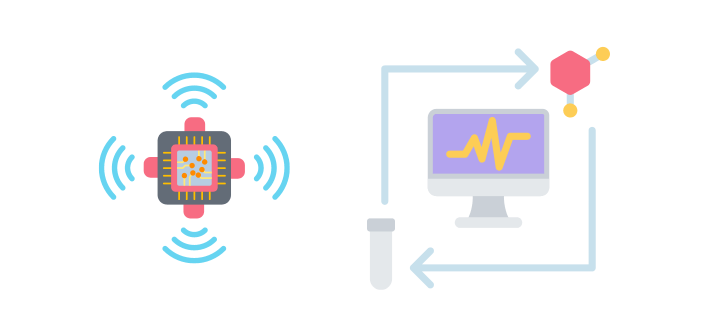Fashion sense – the new wearable sensor for non-invasive detection of skin biomarkers

Early detection of disease depends on the fast, continuous and convenient monitoring of vital biomarkers. Researchers from the National University of Singapore (NUS) and the Agency for Science, Technology and Research (A*STAR) (both Singapore) have created an innovative sensor that facilitates continuous and real-time detection of solid-state epidermal biomarkers (SEB), a newly identified and promising category of health indicators.
The research team, co-led by Assistant Professor Liu Yuxin from the NUS Institute for Health Innovation & Technology , alongside Yang Le, Principal Scientist and Head of the Sensors and Flexible Electronics Department at A*STAR’s Institute of Materials Research and Engineering (IMRE), has developed an innovative, non-invasive method for monitoring health. Their method can now detect biomarkers such as cholesterol and lactate, directly on the skin.
The wearable sensor is made from stretchable hydrogel and addresses the limitations of current methods that depend on biofluid samples like blood, urine and sweat. This advancement positions the sensor as a promising option for continuous, real-time health monitoring through wearable technology, aiding in the early detection of conditions such as cardiovascular diseases and stroke.
Additionally, it can effectively track lactate levels in athletes, which signal exhaustion and tissue hypoxia, impacting their performance. This breakthrough is particularly relevant to fields such as chronic disease management, population-wide screening, remote patient monitoring and sports physiology. The research team’s results were published in the journal, Nature Materials.
You may also be interested in:
- Worm your way to diagnosis: ‘worm-on-a-chip’ device could be used to diagnose lung cancer
- Biomarker and immunogenicity testing: an interview with Jayaprakash Kotha
- Tracking diseases via sweat – a mini device that does it all
Currently available biomarker detection methodologies arrive with their own set of challenges. Blood tests are invasive and inconvenient, and urine analyses lack real-time capabilities. Although sweat biomarker analysis is non-invasive, it is hindered by the challenge of inducing sweat in inactive individuals and the discomfort associated with using sweat-inducing drugs. These factors create obstacles to the early diagnosis and treatment of diseases.
SEBs however, look to be a promising alternative. Biomarkers such as cholesterol and lactate, located in the stratum corneum—the outermost layer of the skin—have demonstrated strong associations with diseases like cardiovascular conditions and diabetes. Despite this, directly detecting these biomarkers has proven to be a challenge. For example, conventional solid electrodes lack the appropriate charge transport pathways required for effective electrochemical sensing of these skin-based biomarkers.
Fortunately, the NUS and A*STAR research team has overcome this problem with their new sensor design. When the sensor is applied to the skin, SEBs dissolve into the ionic conductive hydrogel (ICH) layer and then diffuse through the hydrogel matrix, and undergo electrochemical reactions catalyzed by enzymes at the interface between the ICH and the electronically conductive hydrogel layer. This process allows for the wireless transmission of relevant physiological data to an external user interface via a flexible printed circuit board, enabling continuous monitoring.
“This wearable sensor is the first-in-the-world that can monitor biomarkers on dry or non-sweaty skin. The sensor’s novel bilayer hydrogel electrode interacts with and detects biomarkers on our skin, allowing them to become a new class of health indicators. The stretchable design enhances comfort and accuracy as well, by adapting to our skin’s natural elasticity. This innovation can change the way we approach health and lifestyle monitoring, particularly for those living with chronic conditions requiring constant health monitoring,” commented Le.
This novel sensor can continuously and non-invasively monitor SEBs directly on the skin, making it highly desirable and useful for remote patient monitoring and large-scale health screening. Clinical studies have shown strong correlations between the biomarkers detected on the skin and those present in blood samples, confirming the sensor’s accuracy and reliability. Collectively this suggests that the sensor could serve as an alternative to blood tests for monitoring chronic diseases like diabetes, hyperlipoproteinemia and cardiovascular conditions.
“One of the possible applications of this technology is to replace the pregnancy diabetic test, commonly known as the glucose tolerance test. Rather than subject pregnant women to multiple blood draws, our sensor could be used to track real-time sugar levels conveniently in patients’ homes, with a similar level of accuracy as traditional tests. This also can be applied to diabetes in general, replacing the need for regular finger-prick tests,” Yuxin explained.





